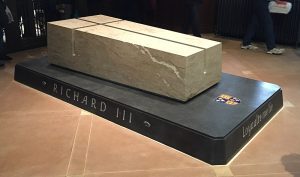Y DNA or not Y DNA? That is the question. With apologies to William Shakespeare. (see Hamlet, Act 3 Scene 1) Will another DNA test provide new insights? That is the hope. I took advantage of one of the many seasonal offers to purchase a Y DNA test. The more commonly used autosomal DNA test, which I completed in 2018, has thrown out a very large number of previously unknown relatives. The current count (January 2025) is over 20,000. It is one thing to know that I am related to someone. It is quite another matter to work out how I am related. The vast majority of those 20,00 remain unknown.
The amount of shared autosomal DNA decreases with each generation back in time. As the numbers become smaller, the possibility of false positives increases. A small match might encourage me to look harder and for longer, but I would not regard it as evidence without corroboration. It is generally accepted that 6 or 7 generations is the absolute limit for conclusions to be drawn using autosomal DNA. Apparently zero matches can be obtained after 3 or 4 generations, even when the connection can be proved by other means.
Y DNA testing has two very specific benefits and one disadvantage. Y DNA is only passed through the male line. Therefore, any match must be through sons of sons. This reduces the search area considerably. If there is a daughter then the chain is broken. My sister and I inherited Y DNA from our father. I passed it on to my sons. My sister could not pass it on to any male children that she may have had. (As it happens, she had no sons.)
Another positive is that Y DNA changes very little across the generations. The negative is that Y DNA changes very little across the generations. Finding common Y DNA tells us that there is a shared male ancestor. Good news! But it gives no solid clue about when. That ancestor may be 4, 8, 12 or more generations back.
 When a skeleton was discovered under a car park in Leicester in 2012, Y DNA was used to help identify the remains as those of King Richard III. He died in 1485. The researchers went back through 19 generations to prove the case. Five living relatives (all sons of sons of sons etc.) provided DNA samples. The minor problem is that four samples did match, both each other and Richard III, but one did not. If the researchers know where the chain was broken in that particular case, then they are not saying. And nor should they.
When a skeleton was discovered under a car park in Leicester in 2012, Y DNA was used to help identify the remains as those of King Richard III. He died in 1485. The researchers went back through 19 generations to prove the case. Five living relatives (all sons of sons of sons etc.) provided DNA samples. The minor problem is that four samples did match, both each other and Richard III, but one did not. If the researchers know where the chain was broken in that particular case, then they are not saying. And nor should they.
This demonstrates the old adage that you always know who your mother is, but you can be less certain about the identity of your father.
File: Picture of Richard III’s new tomb (cropped).jpg – Wikimedia Commons
